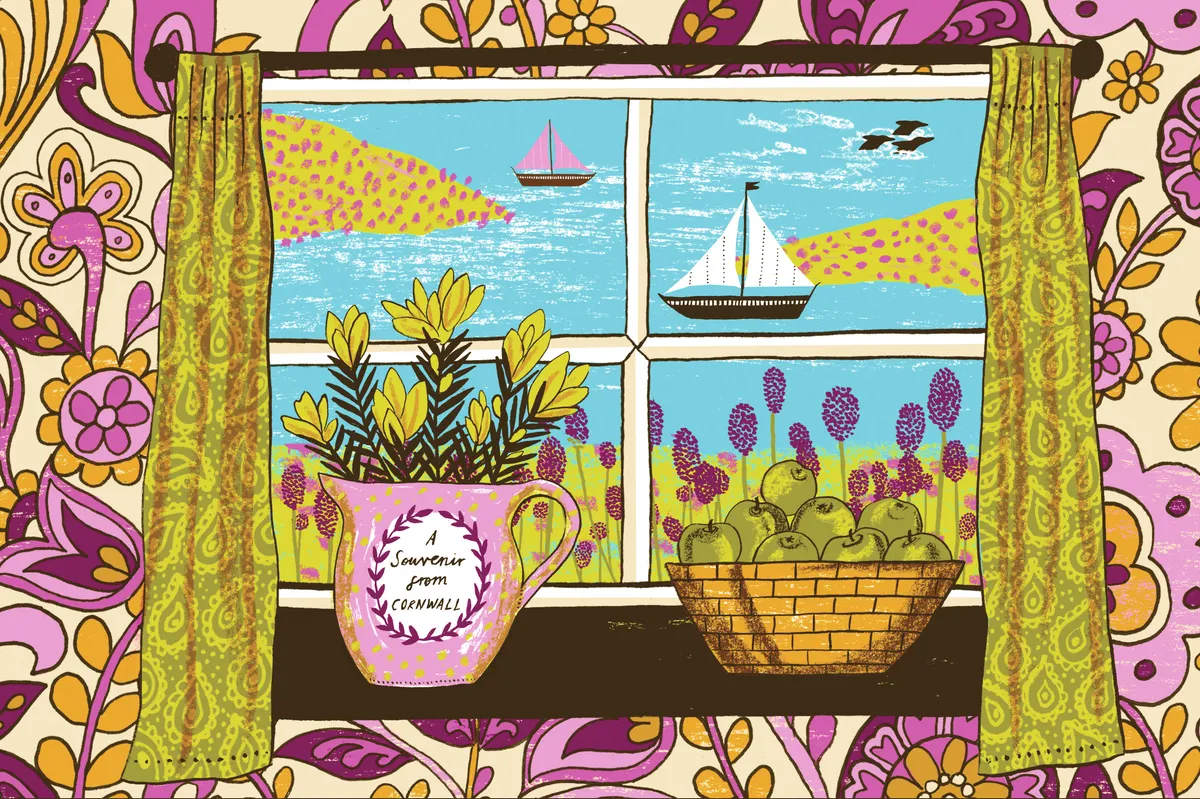My childhood holidays were spent on the slender peninsula of Cornwall where you are never far from the sea. A chunky flower press came on holiday too. For years a favourite possession, it was also my hobby. I recall precious time spent exploring hedge banks, beaches and cliff tops, filling the flower press and learning about coastal flora.
I’m still fascinated by the UK’s dramatic and complex perimeter of constantly shifting natural features and by the sheer variety of plants growing in the mild climes of the South West. The main habitats are heathlands and sea cliffs, but I’ve found flowery meadows too.
It's the perfect destination for a long-weekend and here you'll find information on when and where to go, plus the best maps and guides to take with you and a list of recommended places to stay.

Inspiration
These fragile areas of native flora are now few and far between. More than 80 per cent of lowland heath in the UK has disappeared in the past 200 years, but remaining areas are now being carefully managed, giving us the opportunity to explore and engage with these less familiar ecologies. It’s easy to bypass them on your way to an idyllic sandy cove, but travelling has made me appreciate what’s beneath my feet and value the pristine wildness and open access of much of our coastline.
When to go
The cliffs are at their most colourful from May to September. Early summer is best for orchids, and if it’s butterflies you’re after, wait until the meadows grow tall, but note they are cut for hay in late July. Lizard Point is a prime location for watching dolphins, grey seals, seabirds and the occasional basking shark. In June, there are dusk walks on Goonhilly Downs to hear the churring call of the nightjar.
Where to go
The Lizard is known for its wildflowers. Cornish heath (Erica vagans) is abundant here. It has whorls of narrow leaves and distinctive pastel-pink flowers with a chocolate-coloured rim. Heathland normally occurs on well-drained, nutrient-deficient, acid soil, conditions that suppress decomposition and nutrient recycling so that plants have to adapt. Heathers have symbiotic relationships with microscopic fungi that develop in their roots. Common heather (Calluna vulgaris, identifiable by its opposite leaves) and the brighter, more robust, bell heather (Erica cinerea) often grow together. Tangled among the sultry summer purple of the heathers are dense low thickets of western gorse (Ulex gallii), the rich-yellow flowers providing yet more fodder for the bees. Low bushes of delicious bilberries (Vaccinium myrtillus) and the creamy flowers of the burnet rose complete the heathland tapestry.
In boggy areas, sphagnum mosses thrive, providing anchorage for other interesting species such as the sticky, insectivorous sundew (Drosera rotundifolia). As the heath breaks, there are soft-pink blooms amid the grasses; colonies of heath spotted orchid (Dactylorhiza maculata). Near Kynance Cove, the uncommon meadow saxifrage (Saxifraga granulata) once caught my eye.
Coastal wind prunes the growth of woody plants and nearer the waterline they also need to withstand the desiccating effects of salt spray. The leaf surface area of these plants is often reduced or they are protected by a waxy coating to minimise water loss. Sea holly (Eryngium maritimum) colonises freely among marram grass, and can be found in the dunes at Gunwalloe Church Cove.
If you like to surf as well as botanise, head to the rugged north Cornwall coast. St Agnes Beacon and Chapel Porth cliffs have wonderful flora. Find betony, spring squill and candy-pink clusters of common centaury (Centaurium erythraea) on your way down to the ruins of Wheal Coates tin mine. On the cliffs sea thrift (Armeria maritima), one of the prettiest coastal flowers, forms dense cushions, its dancing pink pompoms mesmerising in the wind.
Plant to grow at home
There are two hardy, floriferous native plants worth considering, both easily available in cultivation. The first, Geranium sanguineum (bloody cranesbill), has a useful low-spreading habit, reaching just 25-35cm. Large, single flowers of intense magenta contrast nicely with the dark-green foliage and appear from May to August. A pale-flowered form sometimes occurs naturally, but the combination of large flowers and deeply divided leaves make in situ identification straightforward. Requiring sun and well-drained soil, its coastal form (var. prostratum) is nestled in between boulders on the cliffs above Kynance Cove.
A second suggestion is Sanguisorba officinalis or great burnet, an elegant, airy perennial of damp grasslands. Usually found in rural northern England, it is present in the diverse damp inland grasslands of The Lizard, specifically on Goonhilly Downs. From June to September, dense, floral spikes of deep burgundy seem to float above the slender, branching stems and arching, pinnate leaves. Reaching up to 1m, it stands well into winter, providing structural interest. It associates well with its natural neighbours (soft grasses and meadowsweet). It needs some sun and moisture to thrive, but is tolerant of exposed sites. Once established, it seeds itself around.
Guides and maps
- Field Guide to Orchids of Britain and Europe by Karl Peter Buttler (Crowood Press, 1991)
- The Wild Flower Key by Francis Rose and Clare O’Reilly (Warne, 2006)
- Online Atlas of the British and Irish Flora (brc.ac.uk/plantatlas)
You can also find information at cornwallwildlifetrust.org.uk
Places to stay
Tremerlin Helford, Cornwall TR12 6JZ. Tel 07876 198894, tremerlin.co.uk for riverside seclusion and a 1920s artist vibe.
Trelowarren Estate Trelowarren, Mawgan, Helston, Cornwall TR12 6AF. Tel 01326 221224, trelowarren.com offers stylish self-catering eco houses in the heart of The Lizard, with pool and tennis courts.
Words Hannah Gardner
Illustration Alice Pattullo